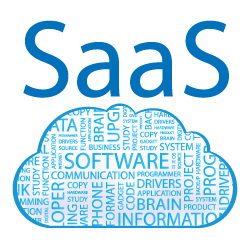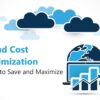As Cloud technologies continue to evolve, more and more software buyers are seriously evaluating software as a service (SaaS) solutions against on-premise offerings. While there are many factors that influence which deployment model is best for any particular business (e.g., ability to manage IT internally and speed of deployment) the cost of the system is often a key factor. But comparing the true cost of a Cloud-based system against an on-premise system can be time-consuming and is often a complex undertaking.
For instance, most buyers understand that on-premise licenses are typically purchased with a large, upfront investment and SaaS licenses are purchased for a relatively cheaper subscription price. But many forget to consider the total cost of ownership (TCO) of their investment. That is, they don’t look beyond the licensing costs to consider how other factors such as the need to customize the software and integrate it with existing applications can influence the TCO of their software purchase.
Even then there are intricacies like maintenance and support and training requirements that can make creating an apples-to-apples comparison of the TCO on-premise and Cloud software difficult. If you’re not a seasoned veteran in modeling all these costs, comparing them can become overwhelming.
To help buyers ballpark the true costs of each software model, I recently created an interactive TCO calculator that software buyers can use to compare SaaS against on-premise software over a 10-year ownership period.

The calculator models annual and cumalative costs over this time period and shows buyers at which year of ownership the TCO of a SaaS system will equal that of an on-premise solution, based on user inputs. Although the data comes pre-populated with an example case, users can override every value to see the impact that changing any particular value will have on the TCO as a graph at the top of the calculator automatically refreshes after each update.
While the calculator is useful for getting you in a ballpark, it’s important to note that any business will still have to perform their due diligence to come up with an accurate figure that reflects their unique needs and situation. And there are several influencing factors (e.g. organic business growth) that no general calculator can accurately model. In any case, it’s worth checking it out to get an idea of which system seems right for your business. Check it out here.
Derek Singleton writes for Software Advice.

2 Comments
Leave a Reply
Cancel reply
Leave a Reply
This site uses Akismet to reduce spam. Learn how your comment data is processed.
























































































































































































Luis
April 12, 2013 at 8:52 pm
Thanks for explaining this, Derek. Very informative and easy to understand.
Andrew
May 8, 2013 at 2:48 pm
Interesting comparison. Looking at it still makes me think software as a service is the more sensible option. Perhaps over a ten year period it will be no cheaper, but what if you switch to alternative software within three years, for example? Then a monthly subscription would be much better value vs. a large one-off subscription.